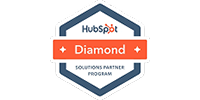4 eCommerce Digital Marketing Tools For Higher Conversions
If you’re like most eCommerce brands, your digital marketing strategy consists of a regimented diet of paid ads, social media posts, and promoted content. But is your marketing team really taking the time to discover and test new marketing strategies to optimize engagement across all of these channels? In our experience, companies struggle to keep up with evolving eCommerce digital marketing trends, often relying on the same old marketing techniques and customer touchpoints that fail to deliver consistent results.
Let’s discuss some digital marketing tools that have proven particularly effective for direct-to-consumer brands and brainstorm ways to incorporate them within your current online shopping experience!
Shoppable Ads
How often have you scrolled through your Instagram feed, been stopped by an ad sandwiched between your best friend’s posts, and found yourself on the brand’s website within seconds? That’s exactly the seamless experience that shoppable ads are meant to create, and if your brand isn’t capitalizing on this strategy, you’re missing out!
For eCommerce businesses in particular, Instagram allows brands to tag products within their organic content to enable a faster browsing and checkout process. When shoppers click “learn more,” they’re brought to an in-app product details page and can easily finish checkouts on the brand’s website without ever closing their app. Alternatively, you can use the “swipe up” feature on Instagram Stories to seamlessly direct users to the product page on your website. Both of these shoppable ad experiences allow brands to capitalize on social commerce and remove friction in their sales funnel. Instagram is also in the process of launching “Checkout on Instagram,” currently available only for a few major brands, which will make browsing even easier by allowing users to complete in-app checkouts.
Shoppable content replicates the offline shopping experience by connecting the point of inspiration with the point of sale. Remove as many barriers to conversion as possible to optimize your eCommerce digital marketing strategy, keep scrollers engaged, and shorten your sales cycle.
Retargeting Ads
Retargeting (otherwise known as remarketing) ads are advertisements served to users who have visited your website and left without making a purchase. Platforms such as Google, Facebook, and YouTube use cookie tracking to store information about individual users’ online buying behaviors. If a user exits your site without buying, you can follow them to their next online location and serve them a personalized ad with the products they were browsing or offer them a discount code to encourage conversion.
Studies show that consumers are 70% more likely to convert when served retargeting ads, and average click-through-rates are about 10x higher than on traditional display ads. Not only are retargeting ads incredibly effective, but they’re also generally cheaper than conventional ads. According to Wordstream, display and social retargeting ad clicks cost anywhere from 2-100x less than search ads.
Once you’ve wet your feet with this technique by running traditional retargeting ads, you can start capitalizing on some of the more advanced features, such as cross-device campaigns and/or buyer journey segmentation. The more you optimize your ads based on observed buyer behaviors, the higher the probability of conversion!
Chatbots
Marketing and sales have always been rooted in successful conversations with potential buyers. New developments in artificial intelligence have allowed these conversations to be digitized and optimized to improve the online shopping experience and increase conversions. Chatbots are software applications designed to simulate human conversations, generally programmed through rule-based scripts that guide shoppers through their buyer journeys.
Not only are chatbots there for customers 24/7, but when scripted well, they also provide a personalized touch that makes all the difference. Retailers can use this tool to recommend new products, follow-up with customers who have abandoned their carts, or promote discounts to encourage conversion. Throughout the conversation, chatbots collect valuable information about the user that can later be used to analyze buyer trends and preferences, as well as retarget shoppers with personalized ads. Chatbots also contribute to your pre-sale customer experience and connect them to your support team for any specific questions or concerns. It’s no surprise, then, that retailers are implementing chatbots in their customer service and marketing strategies at an unprecedented rate.
Juniper Research predicts that by 2023, more than 70% of chatbots will be retail-based, and that retail sales from chatbots will double every year for the next several years, eventually reaching $112 billion by the end of the forecast period. If you want to keep up with your competitors and, more importantly, consumer expectations, it’s time to start leveraging artificial intelligence in your online marketing strategy.
Website Gamification
Website gamification refers to the use of game design mechanics in web development to enhance the user experience. Gamification has been shown to increase conversion rates by encouraging engagement and enabling progressive profiling. Consumers are more likely to provide information such as their names and email addresses in exchange for a fun experience rather than filling out another boring form.
There are many ways to include gamification within your website design, ranging from the very simple to the highly complex. If you’re looking for a fun way to collect consumer information in exchange for a discount code, consider a discount “wheel of fortune,” which allows website visitors to spin a wheel to win a prize. These pop-ups are easy to install and add a layer of personalization to your website. If you want to help guide visitors through their buyer journeys, try building an online quiz that helps users find their perfect style or fit based on their preferences (and collects every bit of information along the way). Once you’re ready to become more advanced with your gamification strategy, consider incorporating a scavenger hunt within your website to encourage users to click through as many product pages as possible in the hopes of winning a prize.
These are just a few examples of website gamification that keep users engaged while increasing the probability of conversion, but there are countless more that your competitors are probably already capitalizing on!
* * *
If you’re ready to take your online shopping experience to the next level, consider implementing some of these eCommerce digital marketing strategies in your next campaign. For more information on how to optimize your social media marketing, check out our blog post: “Why Your Social Media Marketing Isn’t Working.” Our team of outsourced marketing experts is ready to help your organization take the next step.
This article was originally published on March 18, 2020, and has been republished to provide the most accurate information possible.










